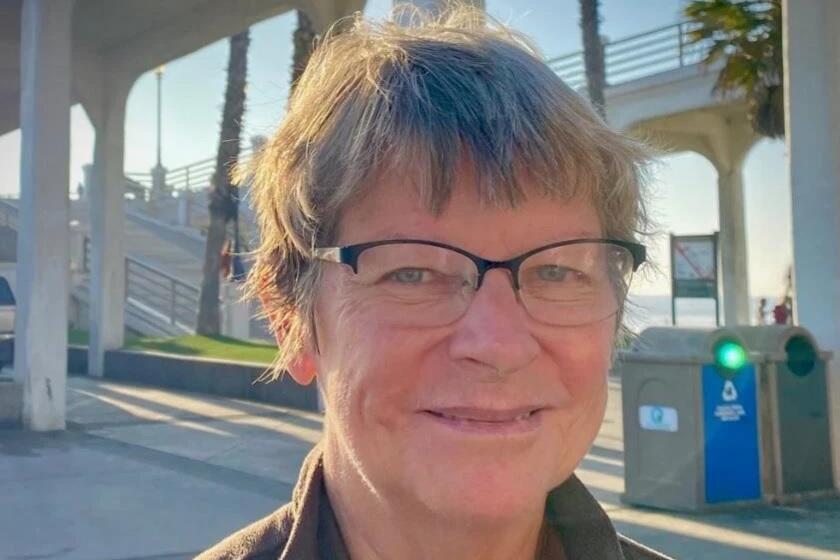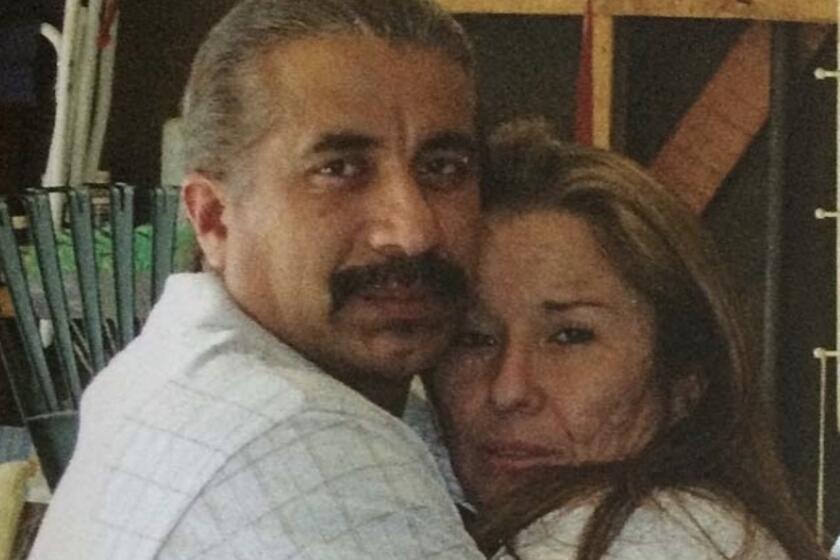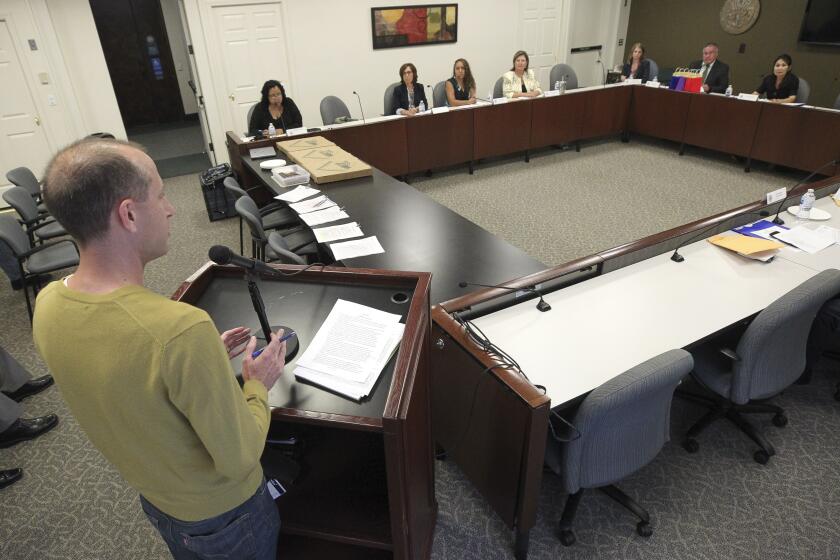Terror attraction McKamey Manor is leaving San Diego for the south
The notorious terror attraction known as McKamey Manor is trying to leave San Diego again — this time for locations near Huntsville, Alabama, and Nashville, Tennessee.
A previous attempt to move — to Illinois, in 2015 — failed when nearby residents got wind of the proposed move and rose up against it.
Proprietor Russ McKamey told The San Diego Union-Tribune of his plans to move again, but would not identify locations more specific than metro area. Searches of property records and business licenses in the south did not turn up any documentation of his plans.
McKamey, 57, still owns the Rancho Peñasquitos home where his haunt has been housed for years, although he says he has moved out. He answered questions by email, although he would not say where he is living now.
“I’m more than ready to move on,” McKamey said.
The personalized horror experience, much of which was carried out in a windowless van and McKamey’s Almazon Street back yard, scares patrons with simulated abductions, assaults and other terrors so intense it was named the most extreme haunted house in the world by Tech Times and The New York Daily News.
McKamey said his Alabama location will have a full-bore haunt similar to the experience he previously offered in San Diego — open to a small, hand-selected groups of participants who meet health requirements for the physically and psychologically dangerous tour of horrors.
In Tennessee, he plans something more tame. “McKamey Manor Presents Caedis Silvis,” he said, will be a larger, more traditional haunt in a 40,000-square-foot facility in Nashville.
“Caedis silvis” is Latin that translates roughly to “murder in the woods.”
The Nashville attraction will be “the most toned-down version of McKamey Manor ever presented” and will be open to members of the general public who are 18 and older, McKamey said. He’s also planning to include a children’s haunt and kid-friendly activities such as zombie laser tag.
McKamey said that both new versions of the haunt will be for-profit businesses and patrons will pay for admission. That’s a change from the approach in San Diego, where McKamey said the only payment he accepted was donated dog food or funds for animal welfare.
McKamey said he has not put his San Diego home up for sale because of a $252,000 tax lien the Internal Revenue Service has placed on his house for unpaid income taxes, interest and penalties for the 2012 tax year, reported last year by the Union-Tribune.
If McKamey were to sell his home without first resolving the lien, the IRS could collect the money owed. McKamey is still hoping to challenge the lien amount. McKamey said the lien appears to be the result of miscommunication between himself and his former domestic partner, Carol Schultz, regarding who was handling taxes and whether they had been paid.
In May, McKamey used his home’s equity to secure a loan for $131,812, according to records on file with the San Diego County Recorder.
McKamey said he needed to money to cover the expense of starting up the two new haunts.
A review of city code enforcement and police records in San Diego show there have been few complaints. Code enforcement officials twice visited McKamey’s house, in December 2014 and August 2016, first because of room additions and structures in the back yard, then because of a complaint about an unpermitted business operating in a residential zone. No citations were issued.
Police received a handful of calls to the house in recent years, and none of them resulted in arrest.
For example, police responded on more than one occasion to a report of kidnapping, only to find that it was just one of the simulated abductions that typically kick off tours of McKamey Manor. Eventually, McKamey started notifying police when simulating abductions in public.
McKamey told the Union-Tribune that much of what appears on YouTube videos — vomiting, participants weeping and bruised, a young man crying out to be released as his head is shoved under water — is “smoke and mirrors” and that visitors are not held against their will.
At the same time, the haunt is meant to be an intense experience for people who aren’t scared by more traditional haunted houses, McKamey has said. And making sure hard-core “adrenaline junkies” leave “whimpering and crying” involves some risk.
McKamey said he thoroughly warns everyone about risks and requires them to sign a waiver acknowledging, among other things, that the experience is physically and mentally dangerous, and there is no “safe word” to immediately end the tour.
McKamey has long denied inflicting harm beyond cuts, bruises and other minor injuries on participants. He has said the experience is closely monitored, participants get breaks if they become too stressed and that he lets participants leave if they decide they really want to.
At least one person who took a tour last year told San Diego police she got more than she bargained for. A woman reported to the department that she had been assaulted with a deadly weapon while participating in the horror experience at McKamey’s home address on July 31. Detectives investigated and decided not to pursue criminal charges. Part of the reason was that she signed a waiver before taking the tour.
RELATED

Critics such as Amy Milligan of East County say they were held captive after they begged to be let go, and that what happened to them left physical bruises and emotional scars.
morgan.cook@sduniontribune.com
Get Essential San Diego, weekday mornings
Get top headlines from the Union-Tribune in your inbox weekday mornings, including top news, local, sports, business, entertainment and opinion.
You may occasionally receive promotional content from the San Diego Union-Tribune.












